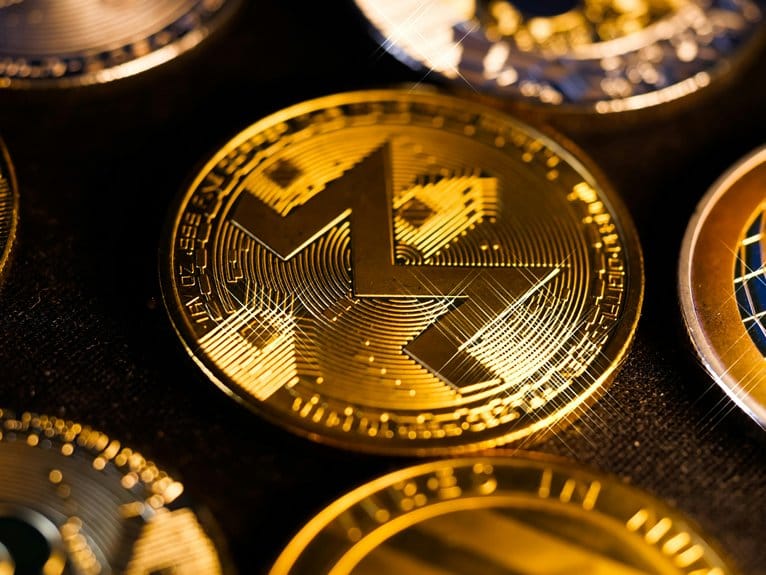Gaming token investments require careful analysis of fundamental metrics and risk factors in the blockchain gaming ecosystem. Key considerations include token utility, daily active users, transaction volumes, and market volatility which can exceed 30% in 24-hour periods. Successful portfolio management typically allocates 5-15% to gaming tokens, emphasizing diversification across ecosystems. Essential due diligence involves evaluating smart contract security, liquidity depth, and regulatory compliance while monitoring social sentiment and adoption rates. Technical analysis combined with thorough market research reveals opportunities within this emerging sector that bridges digital assets with the $200+ billion gaming industry.
Understanding Gaming Token Fundamentals
Gaming tokens have emerged as a significant sector within the cryptocurrency market, representing in-game currencies and digital assets that power blockchain-based gaming ecosystems. These digital assets serve multiple functions, from facilitating in-game transactions to providing governance rights within specific platforms. The underlying token economics determine their value proposition and market behavior.
Gaming tokens operate on distinct models, including play-to-earn mechanisms, staking rewards, and utility-based systems. Their value is intrinsically linked to the success and adoption of their respective gaming ecosystems, making thorough platform analysis crucial for investors.
Market data indicates that gaming tokens typically demonstrate higher volatility compared to traditional cryptocurrencies, influenced by both gaming industry trends and broader market sentiment.
Understanding the fundamentals requires analysis of key metrics: daily active users, transaction volume, token distribution, and ecosystem development progress. Successful gaming tokens maintain a balanced economy that prevents inflation while incentivizing user engagement.
Projects with sustainable token economics often implement burning mechanisms, staking requirements, and carefully structured reward systems to ensure long-term viability. These elements collectively contribute to the token's market performance and integration within the gaming platform.
Key Investment Risk Factors
Despite the growing appeal of blockchain gaming investments, several critical risk factors warrant careful consideration before deploying capital into gaming tokens.
Market volatility represents a primary concern, with gaming tokens often exhibiting price swings exceeding 30% within 24-hour periods. Additionally, liquidity concerns persist across many gaming token markets, particularly for newer or less established projects, potentially impacting entry and exit positions.
Regulatory impacts pose another significant risk factor, as authorities worldwide continue developing frameworks for digital assets. Changes in regulatory stance can dramatically affect token valuations and trading volumes.
Technical vulnerabilities, including smart contract exploits and network security breaches, have resulted in substantial losses across multiple gaming platforms. Project-specific risks such as declining player engagement, delayed development milestones, or team restructuring can trigger rapid token devaluation.
Market concentration risk also merits attention, as large token holders can significantly influence price movements.
Furthermore, the correlation between gaming token performance and broader cryptocurrency market trends can amplify downside exposure during sector-wide corrections, necessitating robust risk management strategies and thorough due diligence before investment.
Evaluating Token Utility
While understanding risk factors provides foundational investment knowledge, assessing a token's utility within its gaming ecosystem offers key metrics for valuation analysis.
Token functionality must demonstrate clear use cases that drive demand and create sustainable value within the game's economic model. Investors should evaluate whether tokens serve essential functions like governance rights, in-game purchases, or reward distributions.
A comprehensive utility assessment examines multiple factors: transaction volume, daily active users engaging with the token, and the token's integration depth within core gameplay mechanics.
Strong utility indicators include tokens that facilitate necessary game operations, enable unique player capabilities, or provide exclusive access to premium features. The economic model should demonstrate token scarcity mechanisms and balanced supply-demand dynamics.
Quantitative metrics for evaluating utility include token velocity (how frequently tokens change hands), burn rates for consumable items, and the ratio of token holders to active users.
These data points help determine whether the token serves as a crucial component of the gaming ecosystem rather than merely a speculative instrument, ultimately influencing its long-term value potential.
Market Analysis and Research
Conducting thorough market analysis requires three essential components: competitive landscape evaluation, trading volume metrics, and trend analysis of the broader gaming token sector.
Investors must examine historical price data, market capitalization rankings, and liquidity patterns across major cryptocurrency exchanges to identify potential investment opportunities.
The competitive landscape assessment involves analyzing similar gaming tokens, their relative market positions, and key differentiators. This includes evaluating token distribution models, adoption rates among gamers, and integration with popular gaming platforms.
Market trends indicate that successful gaming tokens typically demonstrate strong correlations with both cryptocurrency market cycles and gaming industry growth patterns.
To conduct effective research, investors should focus on quantifiable metrics such as daily active users, transaction volumes, and developer activity on gaming platforms.
Technical analysis of price movements, combined with fundamental analysis of the underlying gaming projects, helps identify potential entry and exit points.
Additionally, monitoring social sentiment indicators, partnership announcements, and regulatory developments provides crucial context for market positioning and risk assessment in the gaming token ecosystem.
Portfolio Management Strategies
Successful portfolio management in gaming token investments requires a balanced approach encompassing diversification, risk mitigation, and strategic allocation protocols.
Implementing robust diversification strategies across different gaming ecosystems, market capitalizations, and token utilities helps minimize exposure to sector-specific risks while maximizing potential returns. A recommended asset allocation framework typically suggests limiting gaming tokens to 5-15% of a broader cryptocurrency portfolio.
Strategic portfolio rebalancing should occur quarterly, adjusting positions based on market performance and fundamental metrics. This includes analyzing token economics, platform user growth, and development milestones.
Investment ratios should be maintained through systematic profit-taking during market upswings and strategic accumulation during downturns. Investors should consider correlations between gaming tokens and broader market trends, implementing hedging strategies when necessary.
Risk management protocols should include position sizing limits, with no single gaming token exceeding 5% of the total portfolio value. Stop-loss orders and take-profit targets should be predetermined, while maintaining sufficient liquidity reserves for market opportunities.
Regular portfolio stress testing against various market scenarios helps ensure resilience during volatile periods.
Due Diligence Best Practices
Due diligence in gaming token investments builds upon robust portfolio management through systematic evaluation protocols and comprehensive analysis frameworks.
Investors must deploy structured research methodologies that examine technical architecture, token economics, and market dynamics. This includes analyzing smart contract audits, reviewing github repositories, and evaluating the project's consensus mechanisms.
Critical assessment areas encompass team credentials verification, partnership authenticity, and community engagement metrics.
Investors should scrutinize token distribution schedules, vesting periods, and governance structures while considering regulatory considerations across relevant jurisdictions. Project whitepapers require thorough examination for technical feasibility and market fit.
Quantitative analysis should focus on trading volumes, liquidity depth, and price correlation with major cryptocurrencies. Key performance indicators include daily active users, transaction growth, and network effects.
Security considerations must address potential vulnerabilities, including smart contract risks and exchange listing standards. Financial modeling should incorporate token utility metrics, revenue projections, and competitive analysis within the gaming sector.
Document all findings systematically, maintaining updated records of project developments, team communications, and regulatory compliance status for ongoing monitoring and risk assessment.
Frequently Asked Questions
Can Gaming Tokens Be Used Across Different Games From the Same Developer?
Gaming tokens' cross-game compatibility depends on individual developer policies. While some developers enable token usage across their gaming portfolio, others restrict tokens to specific games within their ecosystem.
What Happens to Gaming Tokens if the Game Servers Shut Down Permanently?
When game servers shut down, token value typically plummets to zero, resulting in complete loss of player investment unless developers implement transfer mechanisms or compensation plans beforehand.
Do Gaming Tokens Qualify for Tax-Loss Harvesting in Most Jurisdictions?
Gaming tokens generally qualify for tax-loss harvesting in most jurisdictions, following similar tax implications as other crypto assets. Investors should consult tax professionals when implementing these investment strategies for compliance purposes.
How Do Traditional Gaming Companies View Player-Owned Gaming Tokens?
Traditional gaming companies exhibit mixed sentiment toward player-owned tokens, balancing concerns over revenue control against emerging market dynamics that favor player autonomy and decentralized asset ownership within gaming ecosystems.
Can Gaming Tokens Be Inherited Like Other Digital Assets?
Gaming tokens can be transferred through inheritance rights when properly documented in estate planning. Digital asset management protocols allow beneficiaries to access tokens through smart contracts and custody solutions.
Conclusion
Gaming token investments require thorough analysis of fundamentals, utility metrics, and market dynamics before capital deployment. Due diligence focusing on tokenomics, development team credentials, and adoption metrics remains critical for risk management. Strategic portfolio allocation, combined with ongoing monitoring of gaming industry trends and technical indicators, enables investors to navigate this emerging asset class while maintaining appropriate risk-adjusted exposure levels in line with investment objectives.




